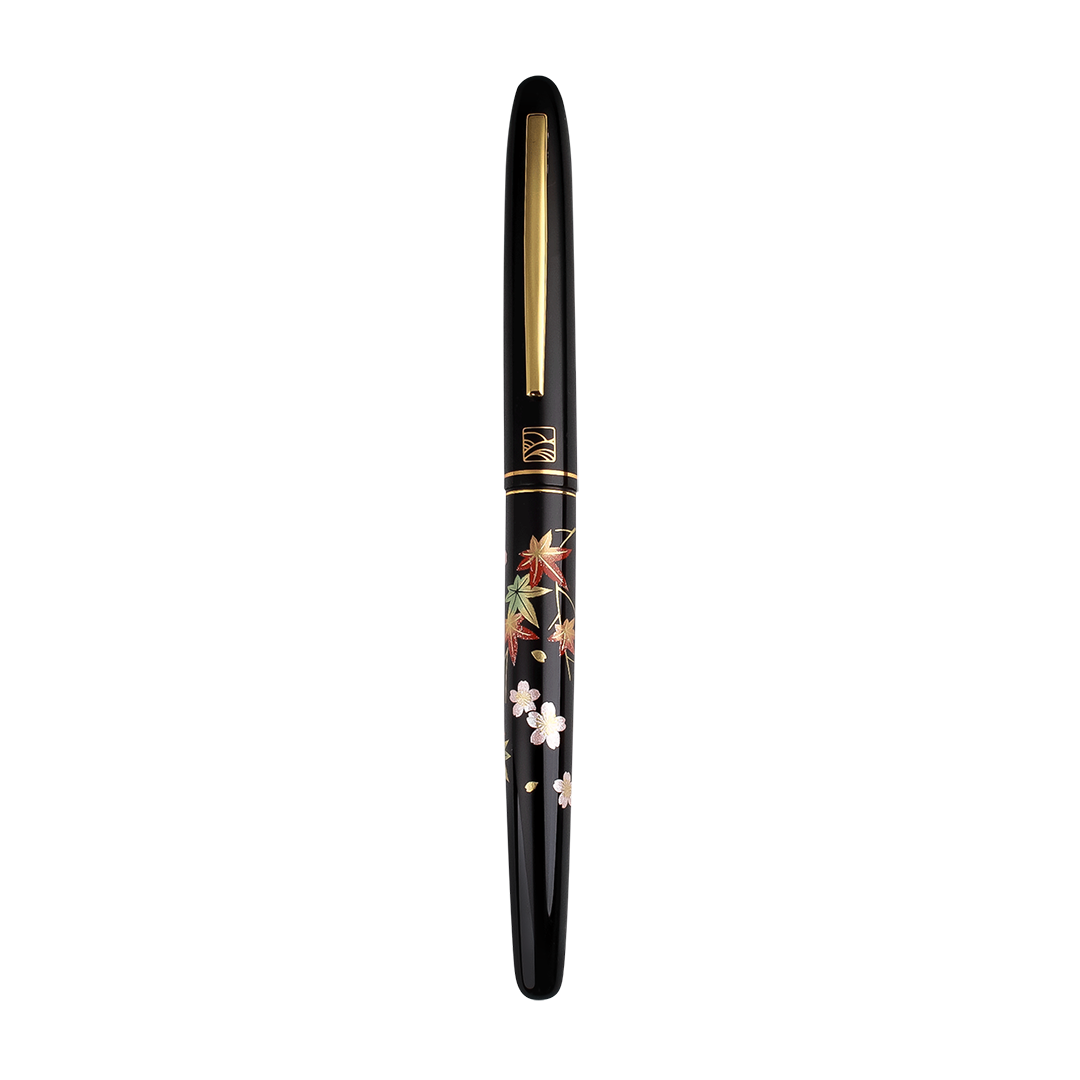Kuretake Kindai Maki-e - Sakura Ni Kouyou
Kuretake Kindai Maki-e - Sakura Ni Kouyou
Couldn't load pickup availability
Description
Description
Wancher x Kuretake
Together with Kuretake, we are determined to bring you the artwork of Kindai Maki-e in 18 designs that represents Japanese symbols, culture, and folklore.
To complete the fine artwork of artisans from Kuretake, we attach the nibs and clip as part of expressing our passion and stories in these fountain pens. With the utmost sincerity, we present you the traditional Japanese design and technology of the Maki-e Monogatari fountain pen for your own use or as a gift for someone else.
Kindai Maki-e and Ukiyo-e
Technique Inspiration
Ukiyo-e is a traditional Japanese painting style that is published using silkscreen printing techniques, similar to Kindai Maki-e. Ukiyo-e involves ink-printing through stencils onto media such as woodblock and paper screens. The art of adhering the picture, to the surface is what makes Kindai Maki-e and Ukiyo-e are comparable. In 1860, this Japanese printmaking technique actually influenced the world-renowned impressionist painter, Van Gogh.
Pen Design
The design is inspired in part by the Japanese 17th century painting style known as Rimpa, which has influenced many artwork to date. It incorporates natural elements such as flowers, trees, mountains, and animals, which are also common in Japanese traditional paintings.
For the final touch, the design is coated with clear urushi to add extra protection for the gorgeous design.
Sakura Ni Kouyou
Sakura Ni Kouyou is a Japanese phrase that means "cherry blossoms and maple leaves."
Cherry blossoms, or sakura, are significant in Japanese culture and are associated with the spring season. They are known for their delicate and ephemeral beauty, and their blooming is often celebrated with Hanami, or cherry blossom viewing parties.
Maple leaves, or Kouyou (also Momiji), are associated with the autumn season. They are known for their vibrant red, orange, and yellow color combination, which are often depicted in Japanese art and literature.
The phrase Sakura Ni Kouyou, therefore, represents the cycle of the seasons and the passing of time, as well as the beauty and majesty of nature. It is often used in Japanese art and literature to evoke a sense of nostalgia or contemplation.
The Monogatari Fountain Pen
The Making Process
The pen has a surprisingly thin and light body without compromising its durability. With a jointless body, the charm of Maki-e drawings is fully extended. To make the shape of the body, the craftsmen have to utilize a single aluminum sheet to forge it downward until it reaches the shape of a pen. To achieve a light but long-lasting pen, such painstaking technique necessitates both delicacy and strength.
The body and cap are made by squeezing the metal during the molding process, which requires arduous labor. As for the body, the beauty of modern Maki-e is reflected in its own story to tell.
Shape
The bullet-shaped Maki-e fountain pen, smooth and moderately sized, is compact, will fit comfortably in your hand, and is perfect for daily use. The nib size is available in Fine and Medium, also compatible with Kuretake's fountain pen nibs.
Specifications
Material: Aluminum
Method: Press drawing molding
Making technique: Kindai maki-e
Pen Size: diameter 11 x 137 mm
Ink-filling system: Eyedrop method, Cartridge, and Converter (European size)
Country of Origin: Japan
Nib Material: Stainless steel iridium point
Nib size: F, M
Country of Origin: Taiwan
*All parts are assembled in Japan
Packaging
Wooden box, Cartridge, Converter
Share













